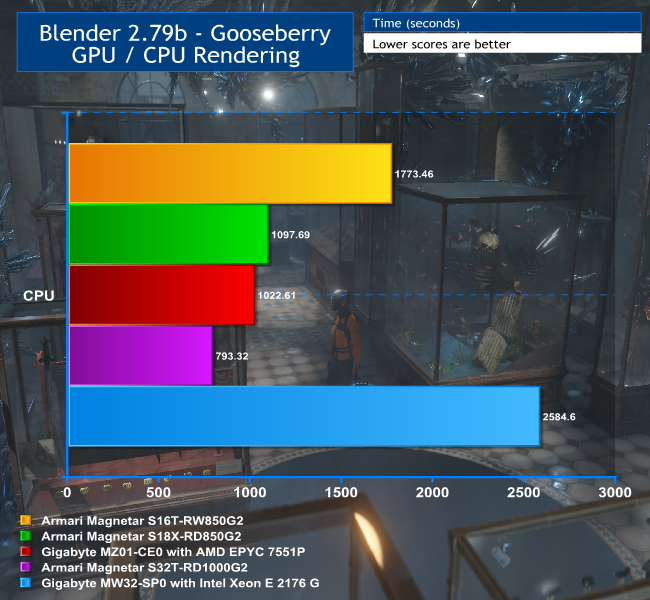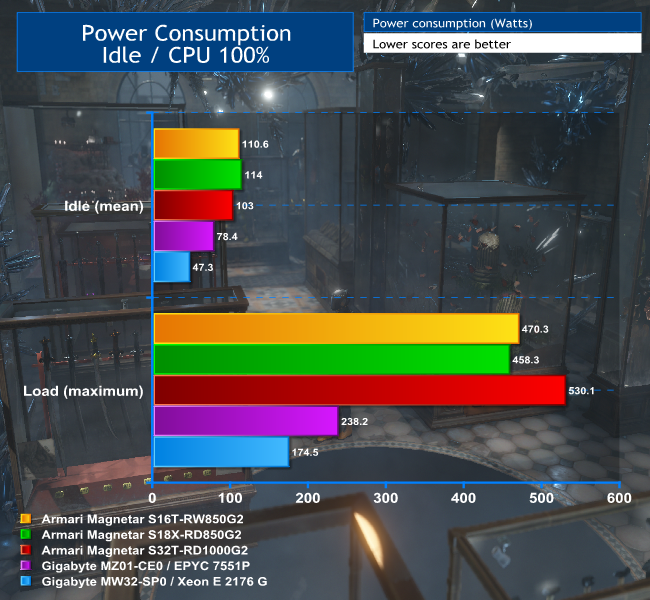Blender 2.79b: Gooseberry Production Benchmark
Blender is a free and open source 3D creation suite. It supports the entirety of the 3D pipeline—modelling, rigging, animation, simulation, rendering, compositing and motion tracking, even video editing and game creation. The latest version at the time of writing, 2.79b, supports rendering on the GPU as well as the CPU. In GPU mode, it will render using OpenCL with AMD graphics cards, and CUDA with NVIDIA graphics cards.
For this test, we used the Gooseberry Production Benchmark. Project Gooseberry is the code name for the Blender Institute's 6th open movie, Cosmos Laundromat — a 10-minute short, the pilot for the planned first-ever free/open source animated feature film. The benchmark renders a single frame from this film in intermediate quality.
For this test, we used the Armari Magnetar S16T-RW850G2 and S18X-RD850G2, Armari Magnetar S32-RD1000G2 and Gigabyte MZ01-CE0 motherboard with AMD EPYC 7551P for comparison.
As with the Maxon Cinebench R15 render, the Intel Xeon E 2176 G is not in the same league as the processors in our other comparisons for this test. On the other hand, the Amari Magnetar S16T-RW850G2 has 16 cores, 167 per cent more, and it's only 45 per cent faster. So you're getting a decent performance from the Xeon.
The story is even more impressive when you look at power consumption. When idle, our Gigabyte MW32-SP0 setup only consumed 47.3W, and under load it still only consumed 174.5W, making it very efficient, although not as efficient as the EPYC 7551P, which performed way more work per Watt than anything else.
 KitGuru KitGuru.net – Tech News | Hardware News | Hardware Reviews | IOS | Mobile | Gaming | Graphics Cards
KitGuru KitGuru.net – Tech News | Hardware News | Hardware Reviews | IOS | Mobile | Gaming | Graphics Cards





